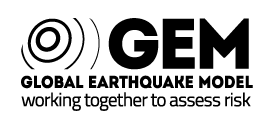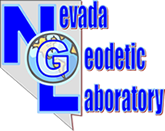
|
|
|
For more information see: Corné Kreemer's GSRM pages. THIS SITE NO LONGER MAINTAINED AND HERE FOR ARCHIVAL PURPOSES.IntroductionWhat is the GEM Strain Rate Model?In 2009, the Global Earthquake Model (GEM) foundation solicited proposals to create a geodetic strain rate model. The results are presented on these pages and are an update of the Global Strain Rate Model (GSRM) v.1.2 of 2004 [Kreemer et al., 2000, 2003; Holt et al., 2005]. GSRM v.1.2 was supported by the International Lithosphere Project and NASA. The new model, named GEM Strain Rate Model (GSRM v.2.1), is a large improvement on its predecessor, mostly because of the enormous increase in data. The data increase is large enough that the new model is almost exclusively based on the geodetic data alone, whereas the older model used faulting information and earthquake focal mechanisms as additional constraints. The data increase is two-fold: 1) we benefited from the proliferation of continuous GPS (CGPS) stations around the world and analysed all available raw data ourselves to obtain a unique consistent set of horizontal velocities, and 2) a large number of studies with geodetic velocities have been published since 2004. The GSRM provides important results for seismic hazard analysis, complementing information from active faulting and historic and instrumental seismicity. Moreover, estimates of the crustal strain rates are useful in constraining models of lithospheric and mantle dynamics. The Current Version of the GEM Strain Rate ModelThe current GSRM is the product of a consortium of researchers led by C. Kreemer of the University of Nevada, Reno. The GSRM is a digital model of strain rate estimates based on geodetic (mainly GPS) velocity data.
Note: For the earlier (Dec 2001 — May 2004) ILP GSRM versions, go to https://gsrm.unavco.org. How Do I Get GSRM Results?
Users can obtain text files with model results and input data by contacting Corné Kreemer (kreemer Citing GSRMUsers of the data and model results are asked to refer to Kreemer et al. (2014). Kreemer, C., G. Blewitt, E.C. Klein, 2014, A geodetic plate motion and Global Strain Rate Model, Geochemistry, Geophysics, Geosystems, 15, 3849-3889, https://doi.org/10.1002/2014GC005407.
|
||||||||||||||
 |
Last Modified: 2019-12-27 15:17:13 America/Denver |
|||||||||||||


